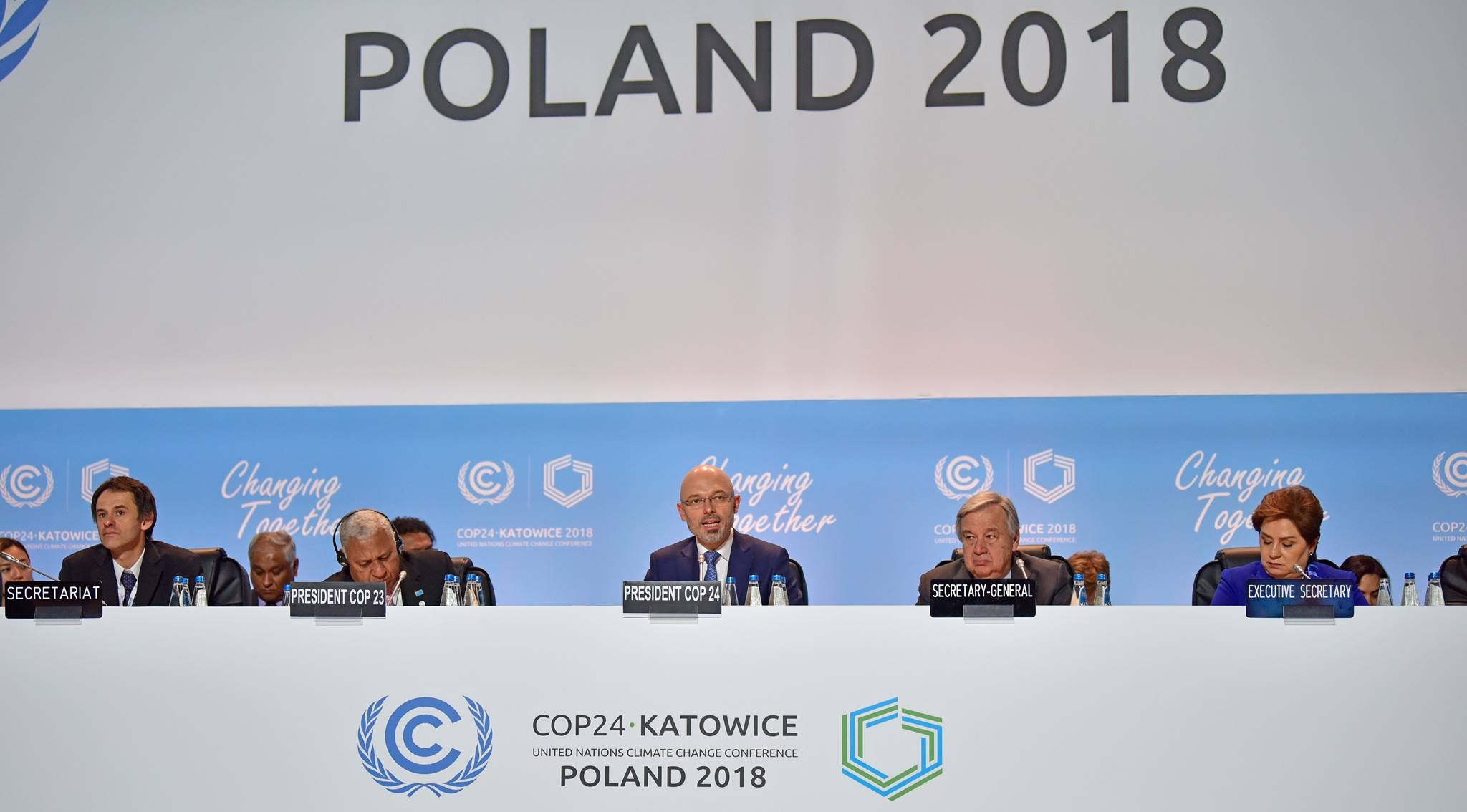By Samisoni Pareti in COP24, Katowice, Poland
Internews-Earth Journalism Network Fellowship
Katowice, Poland – Political will is the key to achieving net zero CO2 emissions globally by 2050, a preliminary report of the Talanoa Dialogue under the UN climate change negotiations currently underway in Poland has affirmed.
Islands Business magazine obtained a copy of the 14-page synthesis report on the Talanoa Dialogue for Climate Ambition as delegates at the COP24 in the Polish city of Katowice are stuck in a deadlock over the mechanics of the implementation rules of the 2015 Paris Climate Change Agreement.
“The key factor to get there, is will,” concludes the synthesis report of the Talanoa Dialogue. “The Paris Agreement demonstrated what is possible when leaders are committed and ambitious: achieving the long-term goal will require the same level of political momentum to be maintained and that climate action remains at the top of the political and/or strategic agenda of leaders at all levels.”
It adds the target would be for countries to aim for a global net zero CO2 emissions by 2050, and for this to happen, emissions need to either peak or rapid declining by 2030, in 12 years’ time.
It would require among others the phasing out of polluting and climate vulnerable infrastructure, reskilling and learning for women, youth and local including indigenous communities, low emission in mass transport and net zero emission growth in airlines and shipping.
Major changes in diet would also be necessary, the synthesis report of the Talanoa Dialogue for Climate Ambition noted, whereby meat and dairy consumption is greatly reduced, capital market investments into cleaner assets prioritised and the elimination of illegal logging and protection to natural carbon sinks and reservoirs increased.
Can these be achieved? Participants of the Talanoa Dialogue believe so with the synthesis report noting that everything hinges on the will of leaders, with the support of national and local governments, the private sector and non-governmental organisations across the globe.
“Our success will be determined by committed and sustained leadership; attention to ethics, social justice and equity; a robust governance for addressing climate change at all levels; a deep understanding of the interdependencies between climate change action, sustainable development and poverty alleviation; our efforts to integrate national ambition with real economic action to enable the full potential of each country to help meet the goals of the Paris Agreement; our ability to motivate and encourage private companies, the investment community and civil society; and the determination to cooperate with a view to ensuring that all relevant actors have access to the financial resources, technologies and capacity necessary to act.”
The report made the strong point for “courage, confidence and enhanced ambition,” because the consequences of inaction “will worsen the quality of life of everyone on the planet, affecting disproportionately the poor and most vulnerable.”
“In the next 15 years, 100 million people could be pushed back into poverty; hundreds of thousands of additional deaths per year will occur between 2030 and 2050; and hundreds of millions of people would be displaced,” said the Talanoa Dialogue for Climate Ambition report.
“The realm of possibility: decoupling GHG emissions from growth is not only possible but also one of the main motors of growth; climate action brings opportunities for economic growth, social mobility, productivity gains and competitiveness. According to one input, bold climate action could yield a direct economic gain of USD 26 trillion through 2030, whilst creating 65 million new low-carbon jobs and avoiding over 700,000 premature deaths from air pollution per year.
“Untapped potential: inputs indicate that NDCs may not incorporate the full potential of climate action; for example, ambition could be significantly increased by simply reflecting current rates of adoption of renewable energy technologies or by replicating sector.
“Ambition by non-Party stakeholders and cooperative initiatives: according to input received, commitments by individual non-Party stakeholders could lower GHG emissions in 2030 by 1.5 to 2.2 Gt CO2; further potential reductions from selected cooperative initiatives could yield reductions in 2030 equal to 15–23 Gt CO2; it should be noted, however, that the potential from non-State and subnational action could be vast, but current impact is still low and hard to track.
“Falling costs of technology: the costs of technologies, such as solar and wind energy, light-emitting diodes, batteries and smart grid components, as well as high-efficiency and hydrofluorocarbon-free products, are falling to the extent that they can already compete with traditional technologies; these costs are already lower than when the NDCs were put forward and, by 2030, are expected to be much lower.
“Society’s calls for ambition: citizens from around the world, including private sector leaders, bolstered by increased awareness and overwhelming scientific evidence, are calling for national and subnational governments to be more ambitious and take concerted action in line with the goals of the Paris Agreement.”
The Talanoa Dialogue was introduced into COP by Fiji’s Prime Minister Frank Bainimarama when he assumed the COP23 Presidency last year. The process was divided into preparatory and political phases and guided by three key questions of where are we? Where do we want to go? And how do we get there?
“Talanoa is a traditional word used in Fiji and the Pacific to reflect a process of inclusive, participatory and transparent dialogue; its purpose is to share stories and build empathy in order to make wise decisions for the collective good,” noted the synthesis report.
“It represents our best attempt to synthesize the inputs and stories shared so far, while avoiding bias towards any subject. The information contained in the document should be seen as a collection of ideas, rather than a set of conclusions; at no point does it represent consensus among participants.”
The report noted that since Talanoa Dialogue began on 10 January 2018, a total of 251 members of COP and 527 non-party stakeholders have participated in the dialogue, contributing nearly 950 inputs and stories into the process.
